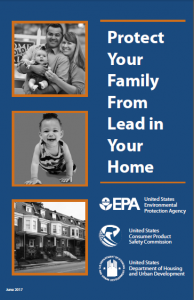Tom Neltner, J.D., is Chemicals Policy Director
In April 2018, the Environmental Protection Agency (EPA) completed a thorough review of its Lead-Safe Renovation, Repair, and Painting Rule (RRP) promulgated a decade ago. This rule requires contractors and landlords to use lead-safe work practices when more than minor amounts of lead-based paint in homes built before 1978 are disturbed. It also applies to pre-1978 child-occupied facilities. This review was conducted pursuant to Section 610 of the Regulatory Flexibility Act because of RRP’s significant impact on more than 300,000 small businesses that perform more than 4 million affected projects each year.
EPA concluded that RRP, including several post-2008 amendments, “should remain unchanged without any actions to amend or rescind it.” As part of the review, the agency updated its economic analysis and found that the estimated annual societal benefits, primarily in improved children’s IQ, of $1.5 to $5 billion exceeds the $1 billion in estimated annual compliance costs. Those estimates translate into an impressive annual payback of 150% to 500%. Keep in mind that these benefits do not include the lower risk of premature cardiovascular deaths attributed to adult lead exposure in a March 2018 report in Lancet.


